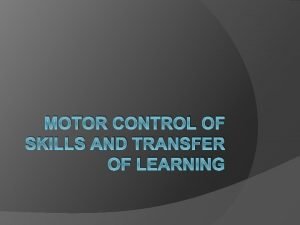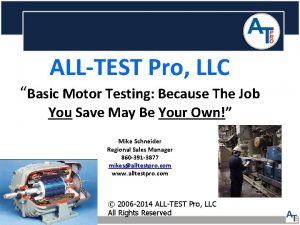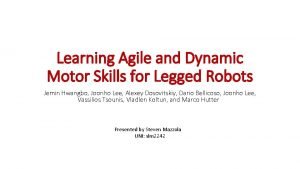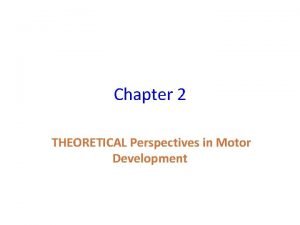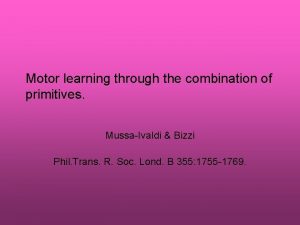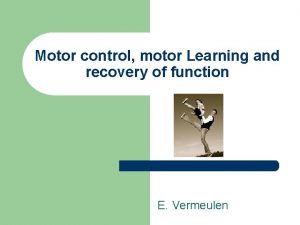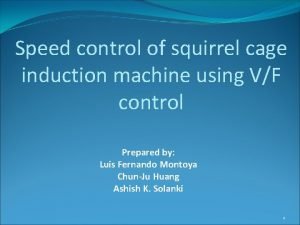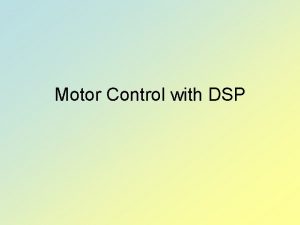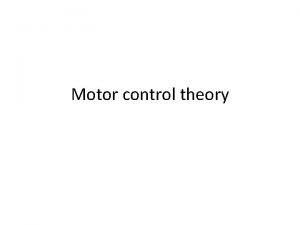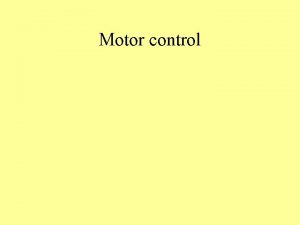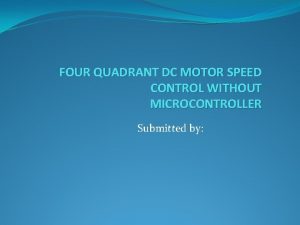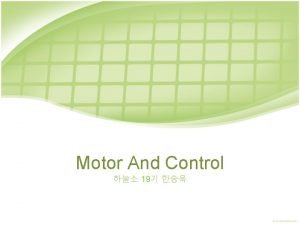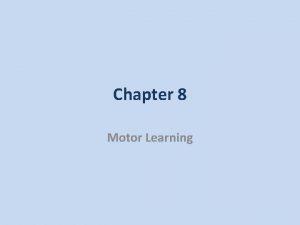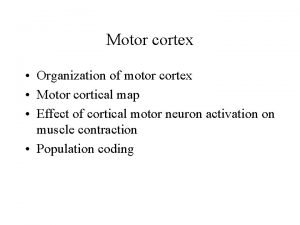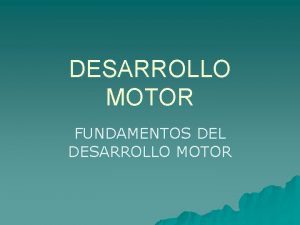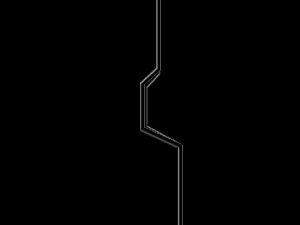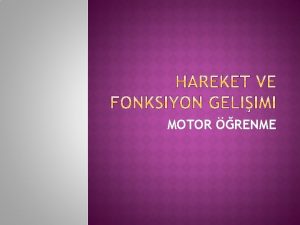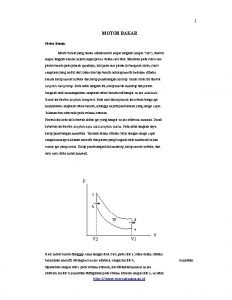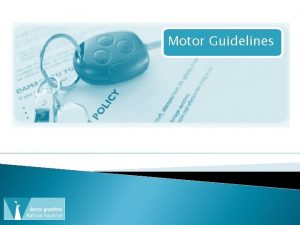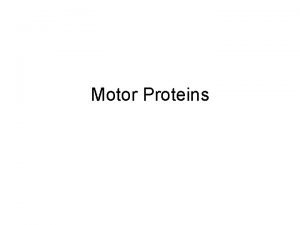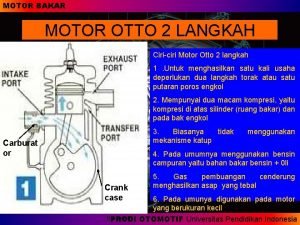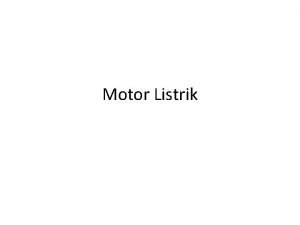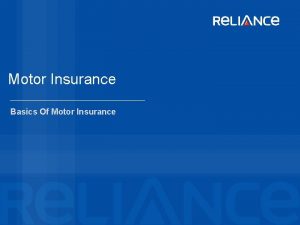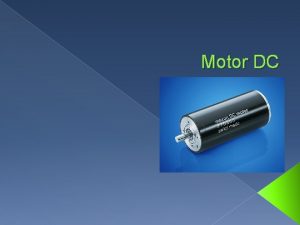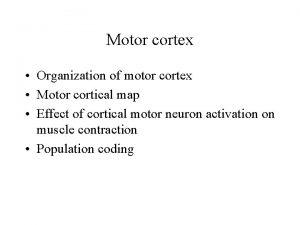Motor Control Learning Level of control in all

















- Slides: 17

Motor Control & Learning • Level of control in all learning • Learning produces changes in control

Learner Task Environment

Motor Skill Defined • • Requires body &/or limb movement Voluntary Goal directed Learned

Characteristics of Human Action • Flexibility – Ability to recruit different muscles and joints to achieve same action • Uniqueness – No two movements are ever performed in exactly the same way

Characteristics of Human Action • Consistency of Action – Temporal and spatial aspects of a movement remain relatively stable from one performance to the next • Modifiability of Action – Ability to alter a movement pattern, even as it is being executed

Classification of Motor Skills

One-Dimensional Classifications SIZE OF MUSCULATURE INVOLVED Gross motor Fine motor

One-Dimensional Classifications DISTINCTIVENESS OF MOVEMENT Discrete Continuous

One-Dimensional Classifications STABILITY OF ENVIRONMENT Closed Open

Environmental Dimension Demands placed on performer by the environment (Performance Space) Constraints Move Where? Move When? Move Where & When? Spatial Temporal Spatial & Temporal

Closed Skill Characteristics Self-paced Fixed Environment Spatial Control Highly Predictable

Open Skill Characteristics Externally-paced Changing Environment Spatial & Temporal control Skill Level of Performer

Two-Dimensional Classification Regulatory conditions C O N Stationary T E No variability X T Motion Variability

Batting Tee Same height Stationary No variability Batting Tee Various heights Stationary Variability Pitch Machine Same speed/place Live Pitch In Motion No Variability

Two-Dimensional Classification FUNCTION Body Stability Object Body Transport No Object

Two-Dimensional Classification C O N T E X T Body Stability Stationary No variability Object Motion Variability Body Transport FUNCTION No Object

Why is two-dimensional classification system useful? Applying the system
 Open loop control motor learning
Open loop control motor learning Name
Name Cuadro comparativo e-learning m-learning b-learning
Cuadro comparativo e-learning m-learning b-learning Pony motor starting method
Pony motor starting method One motor unit
One motor unit Hunting in electrical machines
Hunting in electrical machines Motor parts name
Motor parts name Ee 216
Ee 216 All test pro motor genie
All test pro motor genie Learning agile and dynamic motor skills for legged robots
Learning agile and dynamic motor skills for legged robots Motor learning theories
Motor learning theories Motor learning
Motor learning Motor learning definition
Motor learning definition Speed control of squirrel cage induction motor
Speed control of squirrel cage induction motor Dsp block
Dsp block Theory of motor control
Theory of motor control Motor control importance
Motor control importance Four quadrant dc motor speed control with microcontroller
Four quadrant dc motor speed control with microcontroller
